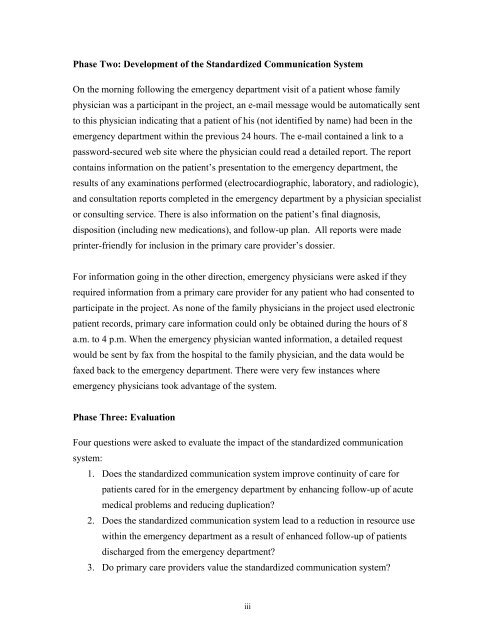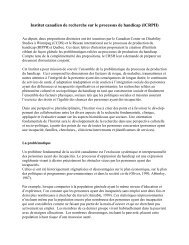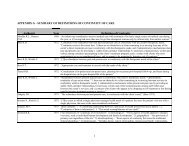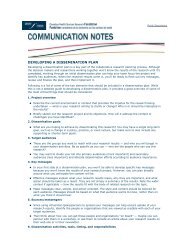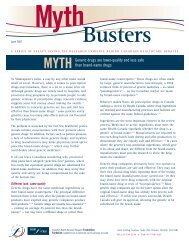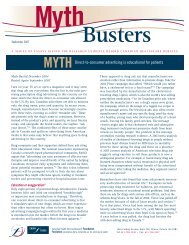Full Report - Fondation canadienne pour l'amélioration des services ...
Full Report - Fondation canadienne pour l'amélioration des services ...
Full Report - Fondation canadienne pour l'amélioration des services ...
Create successful ePaper yourself
Turn your PDF publications into a flip-book with our unique Google optimized e-Paper software.
Phase Two: Development of the Standardized Communication System<br />
On the morning following the emergency department visit of a patient whose family<br />
physician was a participant in the project, an e-mail message would be automatically sent<br />
to this physician indicating that a patient of his (not identified by name) had been in the<br />
emergency department within the previous 24 hours. The e-mail contained a link to a<br />
password-secured web site where the physician could read a detailed report. The report<br />
contains information on the patient’s presentation to the emergency department, the<br />
results of any examinations performed (electrocardiographic, laboratory, and radiologic),<br />
and consultation reports completed in the emergency department by a physician specialist<br />
or consulting service. There is also information on the patient’s final diagnosis,<br />
disposition (including new medications), and follow-up plan. All reports were made<br />
printer-friendly for inclusion in the primary care provider’s dossier.<br />
For information going in the other direction, emergency physicians were asked if they<br />
required information from a primary care provider for any patient who had consented to<br />
participate in the project. As none of the family physicians in the project used electronic<br />
patient records, primary care information could only be obtained during the hours of 8<br />
a.m. to 4 p.m. When the emergency physician wanted information, a detailed request<br />
would be sent by fax from the hospital to the family physician, and the data would be<br />
faxed back to the emergency department. There were very few instances where<br />
emergency physicians took advantage of the system.<br />
Phase Three: Evaluation<br />
Four questions were asked to evaluate the impact of the standardized communication<br />
system:<br />
1. Does the standardized communication system improve continuity of care for<br />
patients cared for in the emergency department by enhancing follow-up of acute<br />
medical problems and reducing duplication?<br />
2. Does the standardized communication system lead to a reduction in resource use<br />
within the emergency department as a result of enhanced follow-up of patients<br />
discharged from the emergency department?<br />
3. Do primary care providers value the standardized communication system?<br />
iii


